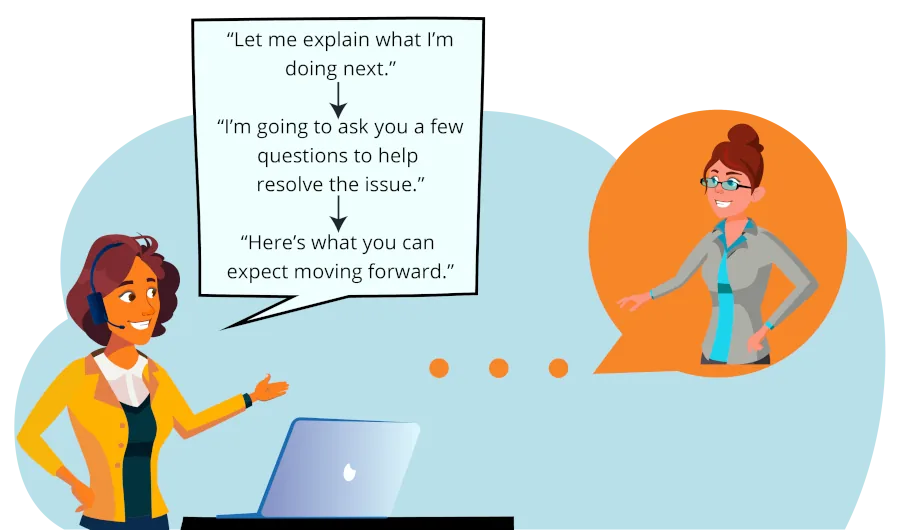What if there was a way to streamline call center interactions, improve communication, and make the customer and agent experience more efficient? Enter signposting.
In a call center context, signposting is a simple yet powerful communication technique that provides clarity, reduces customer confusion, and enhances overall call flow. While it may seem like a small detail, signposting can be a game-changer for improving both customer and agent satisfaction, as well as key performance metrics like First Call Resolution (FCR) and average handle time (AHT).
In this blog, we’ll explore what signposting is, how it works, and how you can leverage it to transform your call center operations. Before diving into the many benefits and practical applications of signposting, it’s essential to understand what it actually means and how it can be implemented in a call center environment.
What is Signposting?
At its core, signposting is the act of guiding customers through a conversation by clearly indicating the next steps, the current status of their inquiry, and any transitions in the process. In simple terms, it’s like giving your customer a roadmap for the call. Signposting ensures customers are never left wondering what's happening next, allowing agents to keep the conversation structured and on track.
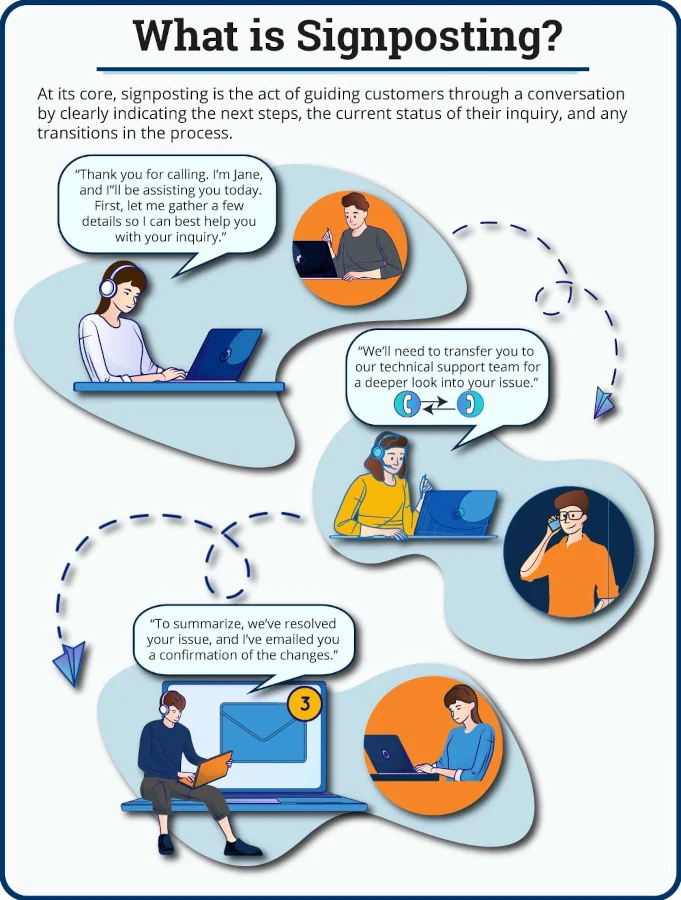
For example, if a customer calls in with an issue, an agent may use signposting to explain what they’ll do next, how long it might take, and what the customer can expect during the call. Instead of simply diving into a troubleshooting process, an agent will take a moment to set the stage, ensuring that both the customer and the agent are on the same page.
To make the concept of signposting clearer, here are a few examples of how it might play out during a call:
- At the start of the call:
"Thank you for calling Company X. I'm John, and I’ll be assisting you today. First, let me gather a few details so I can best help you with your inquiry."
- During the call (when an issue needs to be escalated):
"It sounds like we’ll need to transfer you to our technical support team for a deeper look into your issue. They should be able to assist you right away, and you won’t have to repeat the details you’ve already provided."
- At the end of the call:
"To summarize, we’ve resolved your issue, and I’ve emailed you a confirmation of the changes. You should expect to hear back from us within 48 hours regarding your refund request. Is there anything else I can assist you with today?"
As you can see, these examples use clear, concise language to let the customer know exactly what to expect, helping to alleviate anxiety and build trust in the process.
Why is Signposting Important in Call Centers?
Clear communication is critical for a call center agent. Without it, customers may feel lost or confused about their issue's progress, leading to frustration or dissatisfaction. Likewise, agents may struggle to manage the call efficiently if they don’t have a structured approach to guiding the conversation.
This is where signposting comes in. It’s a simple yet effective tool to improve the clarity of communication, boost the overall customer experience, and help agents feel more in control during every interaction.
Moreover, signposting isn’t just about communicating the current state of a call; it’s about setting proper expectations. When agents can explain the next steps clearly and confidently, customers feel more comfortable and are less likely to become impatient or escalate the issue. This sense of clarity and direction can be a key factor in resolving calls faster, improving customer satisfaction, and increasing the FCR rate.
Signposting vs. Active Listening: What's the Difference?
While signposting is an important part of effective communication, it works hand-in-hand with other essential skills, like active listening. Active listening involves focusing on the customer’s words, understanding their concerns, and responding appropriately. In contrast, signposting is more about guiding the conversation, providing structure, and informing the customer about what to expect next.
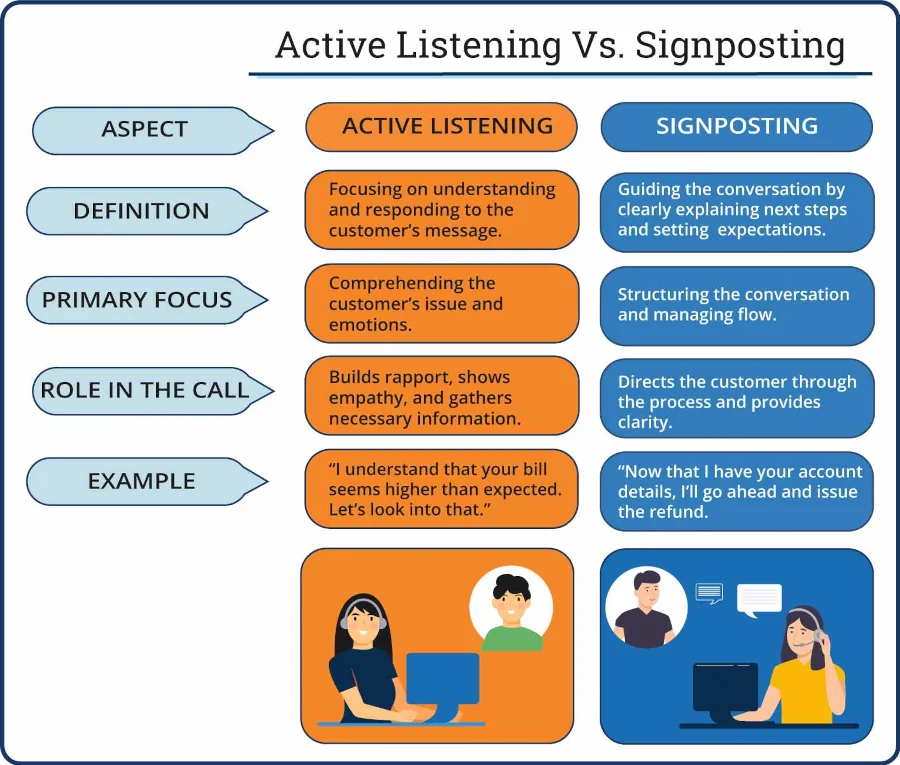
For example, during a call, an agent might actively listen to a customer’s issue and then use signposting to let the customer know what will happen next. Here’s how they work together:
- Active Listening: "I hear you’ve been having issues with your billing statement, and I understand how frustrating that must be."
- Signposting: "Let me quickly pull up your account details, and then I’ll walk you through the steps to resolve this."
In this scenario, the agent first listens carefully to the customer’s issue and then uses signposting to transition smoothly to the next steps. Combining these skills helps agents respond to customers and guide them through the process efficiently and confidently.
Now that we've defined what signposting is and how it fits into the call center landscape, let’s explore its many benefits for agents and customers.
What are the Key Benefits of Signposting in a Call Center?
Signposting may seem like a small part of a call center agent’s toolkit, but its impact on customer satisfaction, call efficiency, and agent performance is substantial. Below, we’ll explore some of the most important benefits that signposting brings to the table:
Improved Customer Experience
One of the primary reasons to incorporate signposting into your call center operations is the improvement in the customer experience. When agents communicate what’s happening during each phase of the interaction, customers feel more in control of the situation. They’re no longer left wondering what’s going on or what will happen next, which helps reduce feelings of frustration and uncertainty.
For example, imagine a customer calling in with a billing issue. Instead of immediately diving into the details of the problem, the agent might say, "Let me first confirm your account details, and then we’ll look into the charges on your bill." This simple act of signposting reassures the customer that the agent understands the issue and is taking the necessary steps to address it, helping the customer feel more confident in the process.
Faster Resolution Times
Signposting can significantly reduce average handling time (AHT) by providing clear structure and direction. Customers who know what to expect and understand the steps involved are less likely to interrupt or derail the conversation. This leads to fewer moments of confusion or clarification, which can lengthen a call.
For instance, if a customer is transferred to a different department, an agent can say, "I’m going to transfer you to our technical support team, who are better equipped to help with this specific issue. You won’t need to repeat your information, and they will be able to assist you right away." By proactively setting this expectation, the transfer feels less disruptive to the customer.
Enhanced Agent Confidence
Having a clear framework to follow can be a huge confidence booster for agents. Call center agents often handle multiple inquiries simultaneously, and signposting can help streamline the process by providing clear guidance on what’s coming next. This structure reduces uncertainty, allowing agents to focus on the solution rather than worrying about managing the flow of the call.
4 Types of Signposting Techniques for Call Centers
There are several ways to use signposting effectively in your call center, depending on the stage of the call and the nature of the customer inquiry. Below are some key techniques for agents to use throughout the call to ensure the conversation remains clear, organized, and efficient.
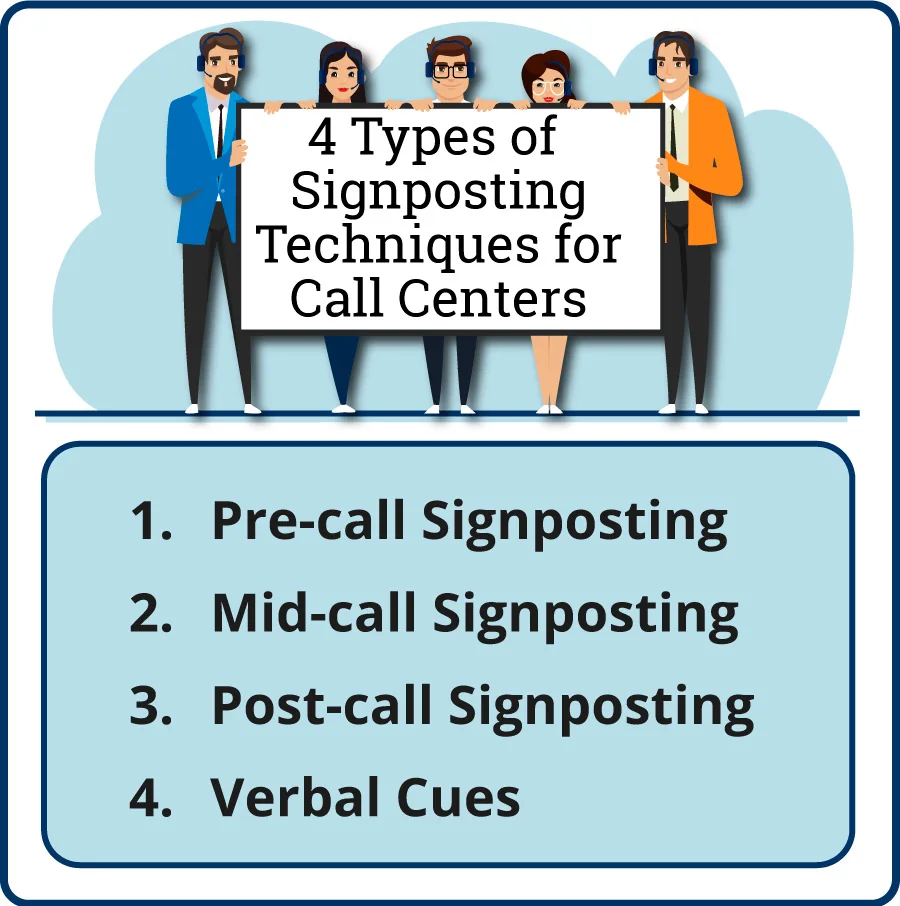
1. Pre-call Signposting
Pre-call signposting refers to the actions and statements made at the beginning of the call that set expectations for the customer. This is a critical moment, as it helps the customer understand the structure of the conversation, reduces anxiety, and prepares them for what’s to come.
For example, "Before we start, I’ll need to gather some basic information about your account, and then I’ll take you through the next steps to resolve your issue."
By setting these initial expectations, agents can avoid confusion later in the call and ensure the customer knows what to expect.
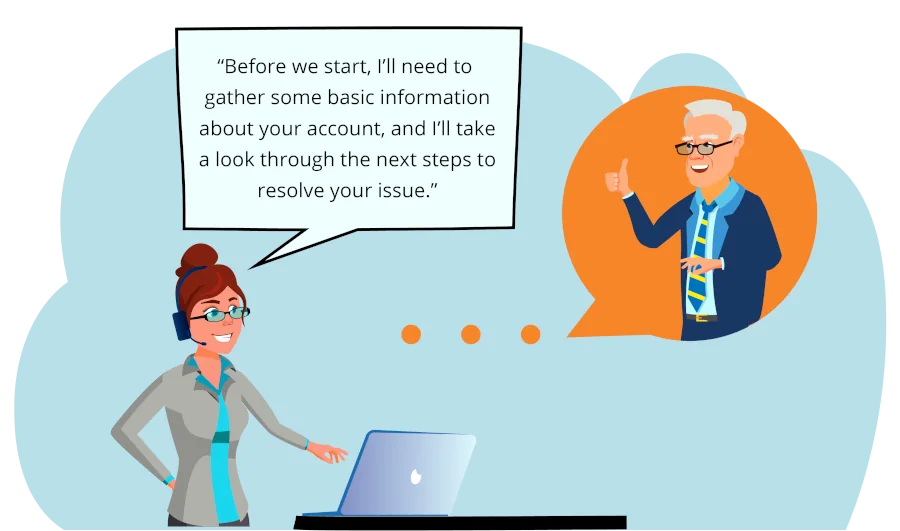
2. Mid-call Signposting
Once the call is underway, mid-call signposting is all about guiding the customer through the process. It’s important to keep the customer informed during each phase of the call—whether the agent is gathering information, troubleshooting an issue, or transferring the customer to another department.
For example, "I’ve found the issue with your account, and I’m now processing the refund. This will take about two minutes."
Mid-call signposting keeps the customer in the loop, reducing confusion and helping to maintain a smooth flow throughout the call.
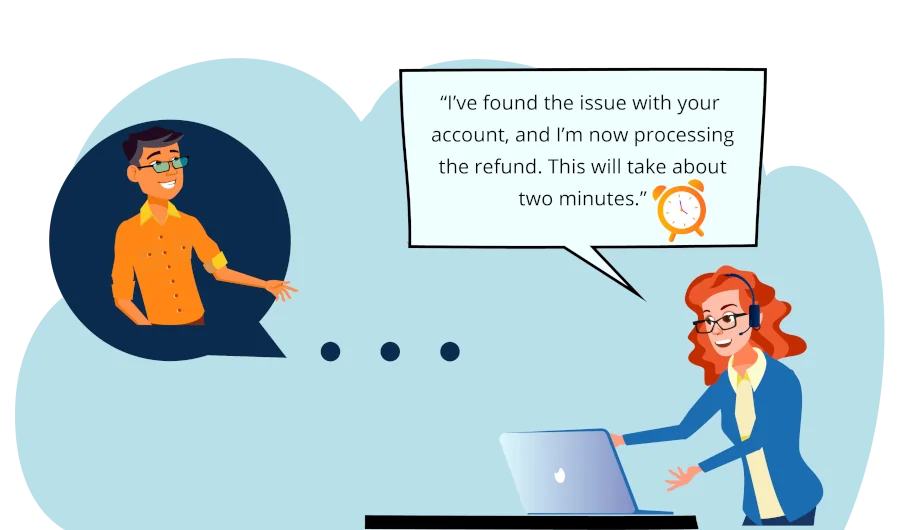
3. Post-call Signposting
Post-call signposting is about wrapping up the call and ensuring the customer knows what will happen next. This is vital to setting expectations for follow-up actions, whether it’s a delivery, a follow-up call, or an email.
For example, "To summarize, we’ve resolved your billing issue, and you should see the updated charges on your next statement."
Clear post-call signposting ensures that the customer leaves the conversation with all the necessary information, reducing the chances of misunderstandings or unnecessary follow-up.
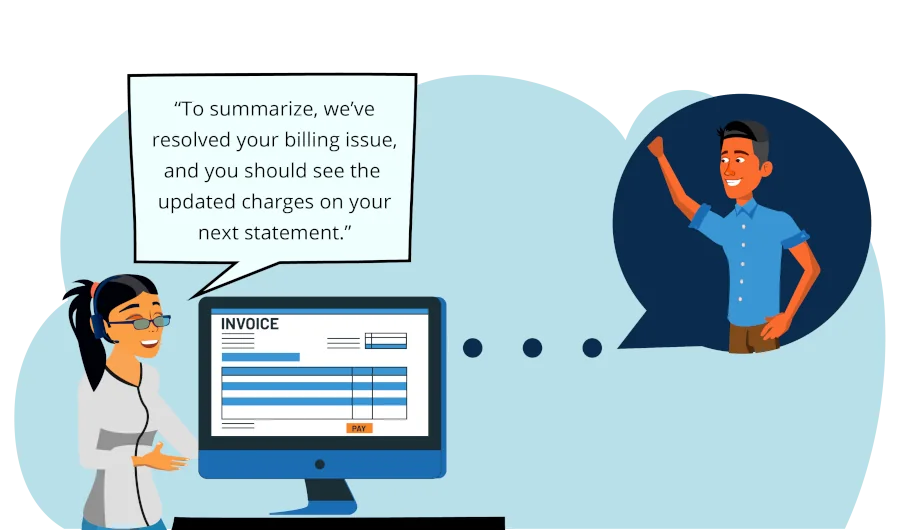
4. Verbal Cues
Throughout the call, agents can use several simple verbal cues to indicate transitions between different phases of the conversation. These cues make the call feel more structured and allow customers to follow the conversation easily.
For example:
"Let me explain what I’m doing next."
"I’m going to ask you a few questions to help resolve the issue."
"Here’s what you can expect moving forward."
These verbal cues act as markers that help customers mentally prepare for what’s coming next in the conversation.
